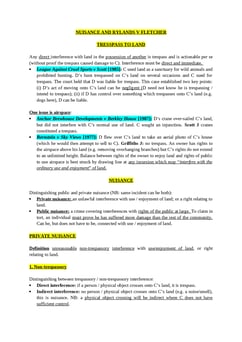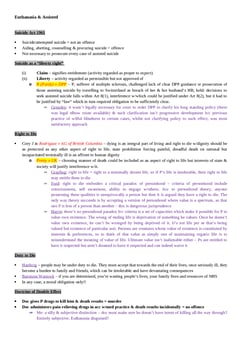Roe v Minister of Health [1954] 2 QB 66
Judgement for the case Roe v Minister of Health
Table Of Contents
In 1949 an operation was performed using anaesthetic kept in a vessel with tiny cracks that had allowed disinfectant to perforate the anaesthetic. The disinfectant paralysed the bones into which it was injected.
Plaintiffs sued Defendant for being paralysed.
CA rejected the claim, saying that, given the level of medical knowledge in 1949, the hospital could not have been expected to consider the risk of the vessel cracking or to take precautions to detect if there had been cracking.
Lord Denning
We should avoid overly-using hindsight to impose unrealistic standards.
If it could not reasonably be foreseen that one’s conduct would harm Plaintiff, then one has no duty of care to him (Bourhill v Young).
Here there was no reasonable foreseeability. Apart from duty, causation has to be proved and remoteness taken into account.
We should generally ask, as a substitute for all 3, “is the consequence within the risk” and apply it using common sense.
This is FAR too vague and won’t answer the questions that foreseeability, causation and remoteness are addressing with greater precision.
For Further Study on Roe v Minister of Health

Tort Law notes fully updated for recent exams at Oxford and Cambridge. ...
Need instant answers? Our AI exam tutor is here to help.
Ask questions 🙋 Get answers 📔 It's simple 👁️👄👁️
Our AI is educated by the highest scoring students across all subjects and schools. Join hundreds of your peers today.
Get StartedSimilar Cases
Related Product Samples
These product samples contain the same concepts we cover in this case.
| Medical Law | Medical Negligence Notes (21 pages) |
| Tort Law | Negligence Law Notes (20 pages) |

 Since 2010, Oxbridge Notes has been a trusted education marketplace, supplying high-quality materials from top achievers at universities like Oxford, Cambridge, LSE, Harvard, and Yale.
Since 2010, Oxbridge Notes has been a trusted education marketplace, supplying high-quality materials from top achievers at universities like Oxford, Cambridge, LSE, Harvard, and Yale.